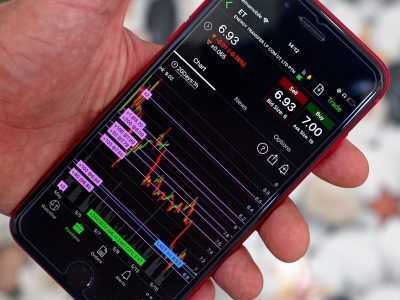
Long before London awakens, New Covent Garden Market, nestled on the Thames’ south bank, is already a hive of activity.
This sprawling wholesale market, a hidden gem in the bustling metropolis, is the lifeblood of London’s culinary scene, supplying everything from neighborhood grocers to Michelin-starred restaurants.
For Gary Marshall, a third-generation trader, the market is more than just a workplace; it’s a legacy.
“New Covent Garden is part of us. It will be part of my son’s life, maybe part of my grandson’s life,” he told AFP, reflecting the deep roots families have established within this vibrant community.
The midnight hustle: a symphony of fresh produce and floral delights
As the clock strikes 10 pm, the market truly comes alive.
Around 2,000 people converge, the air buzzing with the energy of traders, produce arriving from across the globe, and the promise of a new day.
“Once you get here at 10 o’clock, you have a cup of tea, you have a look at your produce arriving. And then it happens. Then the buzz is on. The market’s alive,” Marshall describes, his passion evident.
This old-school, face-to-face trading continues through the night, a testament to the enduring power of personal connection in a digital age.
From market stall to Michelin star
By sunrise, the market’s bounty is dispatched across the capital, a seamless operation that fuels London’s diverse culinary landscape.
“So, by the time people are getting out of bed and walking into their hotel or into their office or a school or a government building, it’s there… It’s like magic,” Marshall explains.
From the esteemed halls of Harrods to the refined tables of Claridge’s, New Covent Garden Market plays a crucial role in providing the freshest ingredients to London’s most discerning establishments.
Even celebrated French chef Pierre Koffmann, a long-time patron, sings its praises: “It was a pleasure to come here, to meet people who were different and talk about vegetables.”
Ensuring relevance in a changing landscape
While the market thrives, challenges remain.
Attracting younger generations to the demanding overnight hours, a consequence of efforts to alleviate daytime congestion, is a constant concern.
Furthermore, as supermarkets rise in prominence, remaining competitive is paramount.
“So, so many of us buy our food from supermarkets now. And of course, in tough economic times, everyone is very money conscious,” observes Wanda Goldwag, chair of the Covent Garden Market Authority.
This necessitates a focus on innovation and sustainability, ensuring the market remains relevant in an evolving consumer landscape.
Securing a legacy for generations to come
Despite these challenges, New Covent Garden Market faces a bright future.
With a turnover of £880 million ($1.1 billion) last year and ongoing regeneration plans, its position as a vital hub remains secure.
The market’s guaranteed lease for the next 25 years offers a sense of stability, a comforting reassurance for traders like Marshall, who envisions his son carrying on the family tradition.
“I don’t know if I’ll still be here in 25 years,” he muses, “But my son certainly will be.”
The post From farm to fork: how the $1.1 billion midnight market has fed London’s elite for 50 years appeared first on Invezz









